#Macrochelys temminckii
Explore tagged Tumblr posts
Text
I always forget that alligator snapping turtles look like fuckin bullshit. fake ass animal. that's a pokémon at BEST.

7 notes
·
View notes
Text
Aligator Snapping Turtle
scientific name: Macrochelys temminckii

• length: 35 to 80.8 cm (13.8 to 31.8 in)
• height: 26-33 cm (10.2 in to 13 in)
• weight : 112.9 kg (249 lbs)
• diet : fish, aquatic vegetation, small mammals and other aquatic life
my personal rating : 6.5/10
#alligator snapping turtle#macrochelys temminckii#turtles#marine biology#marine bio#marine life#marineblogging#heilloohaii#marine otd#herpetology
2 notes
·
View notes
Text
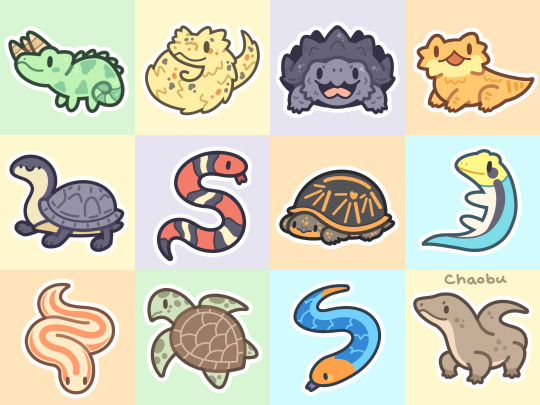
All of my Tiny Reptile designs from 2023! Identifiers for each reptile under the cut.
Jackson's Chameleon (Trioceros jacksonii)
Eyelash Viper (Bothriechis schlegelii)
Alligator Snapping Turtle (Macrochelys temminckii)
Central Bearded Dragon (Pogona vitticeps)
Eastern Snake-Necked Turtle (Chelodina longicollis)
Scarlet Kingsnake (Lampropeltis elapsoides)
Western Box Turtle (Terrapene ornata)
Yellow-Headed Day Gecko (Phelsuma klemmeri)
Costal Rosy Boa (Lichanura orcutti)
Green Sea Turtle (Chelonia mydas)
Blue Coral Snake (Calliophis bivirgatus)
Komodo Dragon (Varanus komodoensis)
499 notes
·
View notes
Note
I see more turtles than usual, is it turtles day??
Every day is turtle day when you love turtles!!!
Here this is for you...

Suwannee Snapping Turtle (Macrochelys suwanniensis), family Chelydridae, endemic to the Suwanee River Basin in the SE United States
This species was once considered to be a population of the Alligator Snapping Turtle, M. temminckii, but was separated into a separate species in 2014.
photograph by Chris Coppola

Red-footed Tortoise (Chelonoidis carbonarius), family Testudinidae, found in savannahs and forest edges around the Amazon Basin of South America
photograph by Warren Farnell

Pacific or Western Pond Turtle (Actinemys marmorata), family Emydidae, California
Vulnerable, due to habitat destruction/degradation and introduction of invasive species (like the Red-eared Slider).
This species was extirpated from Canada. It once ranged into British Colombia.
This is the only species of NATIVE freshwater turtle still found in California. (Other species have been introduced.)
photograph by Yathin S Krishnappa
#turtle#reptile#herpetology#animals#nature#north america#south america#tortoise#snapping turtle#pond turtle
393 notes
·
View notes
Text
Wet Beast Wednesday: alligator snapping turtle
This will be a shorter WBW than usual, as I forgot to prep a post in advance and am writing this on short notice. Today's topic is the alligator snapping turtle, a beast from the bayou almost looks like a dinosaur. Macrochelys temminckii is the only member of its genus and, along with the three members of the genus Chelydra, is one of the four living snapping turtle species. Some scientists suggest splitting it into three species, but this is still a matter of debate. Snapping turtles are large, predatory turtles known for their very sharp beaks, extreme bite forces, and alleged aggressiveness.

(Image ID: an alligator snapping turtle sitting on gravel. It is a large, brown turtle. Its shall has three spiked ridged running down it. The head is large and angular, with a very sharp beak. It has small, brown eyes. Its mouth is open in a threat display. End ID)
The alligator snapping turtle is one of the largest freshwater turtles in the world, surpassed only by a few species of rare Asian softshells. The alligator snapping turtle can be distinguished from the common snapping turtle, whose range overlaps with that of the alligator snapping turtle, by the three spiky ridges going down its shell. These ridges, along with its powerful jaws, are often compared to those of an alligator, hence the common name. The turtles grow through their entire lives and can reach truly huge sizes. In the wild, adult males (who are larger than females) range between 35 and 80.8 cm (13.8 to 31.8 in) in caprapace (top shell) length and weigh between 8.4 and 80 kg (19 to 176 lbs). Sometimes, a true giant will be found, usually an old male. Reported weights of giant males include 113, 107, and 135 kg (249, 236, 298 lbs). The tail is longer and thicker than in most turtles. The head is large and thick and can deliver bites with a force averaging 159 newtons. This is less than the bite force of the common snapping turtle, but still enough to bite someone's finger off. The inside of the mouth is brownish and the tongue has an appendage that looks like a worm on it. Unlike most turtles, the alligator snapping turtle cannot withdraw into its shell. The plastron (lower shell) covers less of the body than in most species and cannot cover retracted limbs, heads, or tails.

(Image ID: a close-up of the head of an alligator snapping turtle with its mouth open. The tongue is visible, which has a pink, fleshy appendage that looks like a worm. End ID)
Alligator snapping turtles live in the southeast USA in rovers, streams, and lakes, preferably with deep water. They spend most of their lives in the water, only leaving if in search of a new home or when laying eggs. They are nocturnal, but may still hunt during the day. The turtles are passive ambush predators who sit perfectly still with their mouths open and tongues exposed. The worm-like appendage on the tongue is used to attract prey, which the turtle will bite down on quickly and with extreme force. This is a form of aggressive mimicry. You may be wondering what they eat and the answer is just about anything. Fish, amphibians, and snails appear to be the most common prey, but they will also feed on crayfish, insects, snakes, worms, birds, small mammals, other turtles, and even small alligators. Basically if it can fit in the turtle's mouth, it will be eaten. While not active predators, they will dig up burrows in search of food. They also feed on carrion and will sometimes eat aquatic plants. A turtle can go 50 minutes between breaths and they sit still so much that most individuals will have a thick layer of algae growing on their shells. The algae helps them camouflage as rocks when not moving. Fishermen tales often say that alligator snapping turtles can depopulate all of the fish in a body of water, but this does not appear to be true. Adult alligator snapping turtles have no natural predators while juveniles are eaten by fish, birds, raccoons, and other snapping turtles.

(Image ID: an alligator snapping turtle underwater in an aquarium. Picture from the Smithsonian's National Zoo and Conservation Biology Institute. End ID)
Mating takes place in spring, earlier in the season in more southern climates. Laying takes place around two months later. The females will leave the water and travel around 50 meters inland. The distance is to prevent the eggs from being flooded, which would kill them. She will build a nest in sandy soil and bury the eggs. No further care is provided. Clutches consist of between 8 and 60 eggs at a time. After 100-140 days, the eggs hatch. The hatchlings are fully independent and must make their own way in life. The sex of the hatchlings is determined by the temperature of the soil they are incubated in. Soil of 29-30 degrees C (84.2 to 86 F) results in primarily females, 25 to 27 C (77 to 80.6 F), results in primarily males, and anything in between results in a mix. Individuals become sexually mature after about 11-12 years. The maximum lifespan of wild turtles is unknown, but individuals in captivity can live over a century.
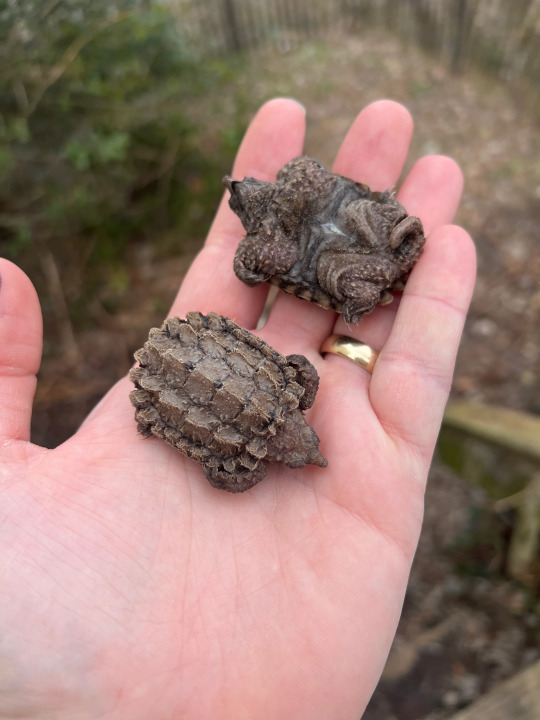
(Image ID: two baby alligator snapping turtles held in a person's hand. They are smaller than the person's palm, but otherwise look no different than the adults. One is on its back, displaying the small plastron. End ID)

(Image ID: alligator snapping turtles hatching in captivity. The eggs are small white spheres that look like ping-pong balls. The number 19 has been written on them in what appears to be sharpie. Several of the eggs have already hatched. In the middle of the picture, a turtle is pertially emerged from its egg. End ID
Alligator snapping turtles are classified as vulnerable by the IUCN. Their primary threat is habitat loss as wetlands are drained and dammed. They are also hunted and used as food by humans. This is common enough that some states have had to pass laws protecting the turtles. Despite being characterized as aggressive, alligator snapping turtles rarely attack humans and only in self-defense. Because they cannot retract into their shells, the turtles defend themselves by facing a potential threat with their mouths open as a warning. This has furthered its reputation as an aggressive animal. Because the turtles take so long to reproduce, restoring populations is a very slow process. Alligator snapping turtles are sometimes used as pets, though they need expert care due to their sheer size and the potential danger of handling them. Use in the pet trade has resulted in the turtles being introduced outside of their native range. They have become an invasive species on some places, notably in southern Africa.

(Image ID: an alligator snapping turtle next to a human man. The human is holding it up by the front of the shell to show its size. End ID)
#wet beast wednesday#alligator snapping turtle#snapping turtle#turtle#freshwater biology#biology#ecology#zoology#reptile#animal facts
221 notes
·
View notes
Text

Fools, I haven't spoken to my cousin Temminckii in 5 million years!
Suwannee Alligator Snapping Turtle (Macrochelys suwanniensis)
Suwannee River in Georgia and Florida, USA
Status: Threatened
-------
I'll try to highlight some of the species that gained protection in the US under the ESA this year. This dinosaur of a turtle was one of them (they can get huge!) They were thought to be Macrochelys temminckii, the regular old alligator snapping turtle, but turns out they diverged about 5-13 million years ago and are their own species.
#turtle#snapping turtle#reptile#reptile art#turtle art#herps#north america#usa#florida#georgia#2024 endangered species
28 notes
·
View notes
Text
I have noticed some trends that the ROTTMNT fandom has hive-minded about.
Some are no-brainers, kind of a logical deduction, and others are humourously specific.
Leonardo hurts his (left?) knee after coming out of the prison dimension (why is it always the left knee?)
Donatello's shell was injured after being pulled/ripped out of the krang consol
Mikey's portal magic left him with some sort of nerve damage that causes tremors (and may require compression sleeves)
There is some sort of time dilation in the Prison Dimension (could be sped up/slowed down, and may be a minor/significant amount of time passed once Leo is pulled out)
Leo is the medic and has been so since a young age
Big Mama's assistant is Venus, and she would look like a female version of Leo (species/markings)
Donnie and Leo are really close and have some special twin relationship, unlike with Mikey and Raph
Leonardo has insomnia
Raph wakes up at 6 AM
Donnie is autistic (I had to add it anyways)
Donnie has a coffee addiction to a point of danger
Mikey has ADHD
Raph abuses punching bags /j
If Donnie had a tail, it would be long and thin
If Raph had a tail, it would look like an actual alligator tail instead of the tail of an alligator snapping turtle (macrochelys temminckii)
Leo is gay (sort of a no brainer but felt I should add it)
If any of the characters are trans, it's going to be a transmasc Leo
Mikey is the most likely to drown and die for some reason (makes sense with his species though)
All of the graffiti in the lair is done by Mikey maybe this was in an episode and I forgot I dunno
Regardless of whether his dynamic with Splinter is positive or negative, Baron Draxum is not allowed to be straight
Miyamoto Usagi is nonexistent, but Yuichi Usagi lives in the hidden city or something
Yuichi Usagi is employed by Hueso as a waiter
Future April wears and afro puff
Future Donnie has beard markings and is really tall and also swol af
Future Raph was Casey Jr's adoptive dad before he died
Casey Jr gets claustrophobic by the chaotic and busy streets of New York
Don has some robot body in the bad future (which is pulling from the 2012 plot)
Anything else to add?
#exclude reblog#analysis and theories#tmnt#rottmnt#april o'neil#casey junior#donatello#leonardo#michelangelo#miyamoto usagi#raphael#yuichi usagi
54 notes
·
View notes
Text
Alligator Snapping Turtles
Facts and Information
Appearance
-Prehistoric appearance
-Pronounced ridges, called Keels, that have spikes on them
-large pointed heads
-hooked beaks
-long, thick tails
Behaviour/Habitat
Alligator Snapping turtles have a life span of 45-70 years.
Adult turtles favour the deeper waters of lakes, swamps, canals, and rivers. They spend most of their time in water, and can stay underwater for up to 50 minutes. Oftentimes, they spend so much time being motionless underwater that algae starts to grow on their backs, which, in turn, can be used as camouflage.
Their also generally solitary creatures, as most turtles are.
Diet
Alligator Snapping Turtles are hunters and scavengers, meaning they both hunt, and scavenge for their food.
Their diet consists of: fish, mollusks, other turtles, frogs, snails, snakes, small mammals, insects, and aquatic plants.
They are most active at night.
During the day, they lay motionless in murky waters with their mouths open, using a red, worm-like projection on their tongues as a lure for prey.
They also have an extremely powerful and dangerous bite.
#facts#information#turtles#turtle facts#tmnt#rottmnt#rise of the turtles#rise raph#raph#Raphael#alligator Snapping Turtles#rottmnt Raph
15 notes
·
View notes
Text


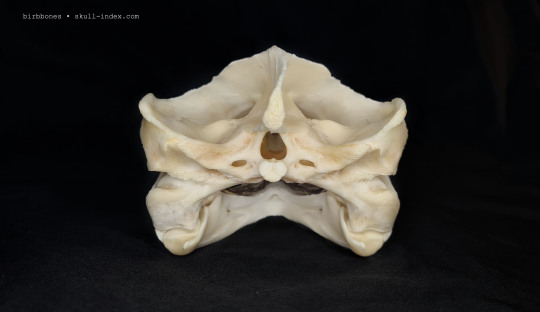
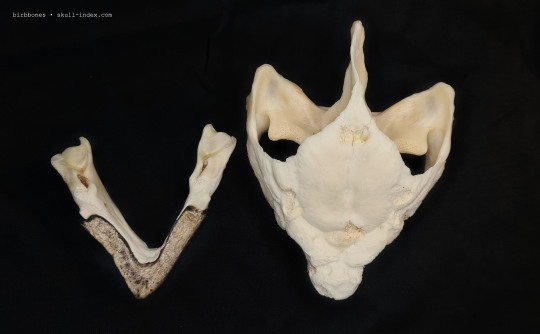
Alligator Snapping Turtle - Macrochelys temminckii
#my collection#the skull index#vultureculture#alligator snapping turtle#skulls#animal skulls#turtle skull
62 notes
·
View notes
Text

Komodo dragon Varanus komodoensis
See, if you'd told me yesterday morning, before I started looking at reference pics, that komodo dragons were this colour- and patternful, I probably wouldn't have believed you. In most pictures they just look brown. But like!

I suspected this mans was freshly peeled at first and that's why he was so vibrant, but then of course I looked closer and. He's literally peeling at the moment. (This is my own picture btw, I just. Forgor.)
Or the zoo lied and it's a whole different monitor lizard lol.
Anyway! Check out my growing digital art zoo here, and tell me...
You can look them up or go by vibes :D If someone suggests something else and it doesn’t win, I’ll add it to my list for the future!
#komodo dragon#art#artists on tumblr#reptile#varanus komodoensis#monitor lizard#digital art#my art#digital zoo
14 notes
·
View notes
Text
28th of October 2024: Alligator Snapping Turtle
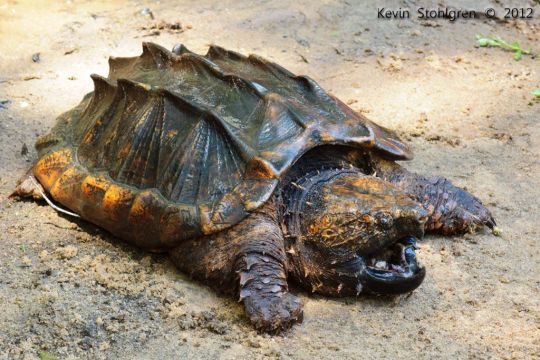
Let’s just keep the ridiculously large critters rolling for our Halloween season; here’s the Alligator Snapping Turtle (Macrochelys temminckii). They are the largest freshwater turtle in the USA [1], at a length of 40-70 cm and weight of 18-70 kg [2].
They are found mostly in the Southern parts of the United States [1], where they will prefer to stay in the parts of the waterways that offer cover to them, such as submerged logs, overhanging shrubbery, or beaver dams. They don’t leave the water, except to lay eggs, and so they also don’t spend time basking in the sun. Instead it is suspected that they use different water depths to adjust their temperature as the seasons change [3].
They are opportunistic generalist predators, being open to eating most things that come swimming their way [4]. That’s not even a metaphor, as their hunting strategy involves opening their mouth to reveal a worm-like appendage that their prey mistakes for food when the Alligator Snapping Turtle lies still. Thus they come closer and the turtle will eat them [2]. This obviously leads to a lot of fish in their diet, as well as crawfish and freshwater mussels, however researchers have also found remains of other turtles, mammals such as nutria, snakes, or even birds within their stomachs [4].
While they’re native to the USA, they have also been introduced to and are now considered an invasive species in South Africa [2]. In the 1960s and 1970s they were also threatened by commercial hunting, and while it’s been banned since, there are still people who illegal hunt them. They are also affected by the killing of other non-human animals by humans, as they may swallow hooks or become entangled in fishing lines [1]. They are rated as Vulnerable by the IUCN, but that assessment was made in 1996 and has not been updated since [5].
Sources: [1] [2] [3] [4] [5] [Image]
#critter of the day#critteroftheday#halloween critters#reptile#turtle#snapping turtle#reptile species#reptile facts#zoology#animal species#herpetology#animal#animal facts#turtle facts#turtle species#aquatic species
2 notes
·
View notes
Text

©photography by Walter Jenkel 2023 Alligator snapping turtle (Macrochelys temminckii) WALTER JENKEL @WalterJenkel walter_jenkel
This beautiful turtle has a prehistoric appearance, which is why it is known as "the dinosaur of the turtle world". But poaching for its meat and shell, deforestation and contamination of aquatic ecosystems are the main reasons why it is on the red list of species in imminent danger of extinction. This situation has led to various states in southern North America legally regulating the prohibition of its capture. Currently there are some captive breeding projects for its repopulation 🐢🖤
23 notes
·
View notes
Text
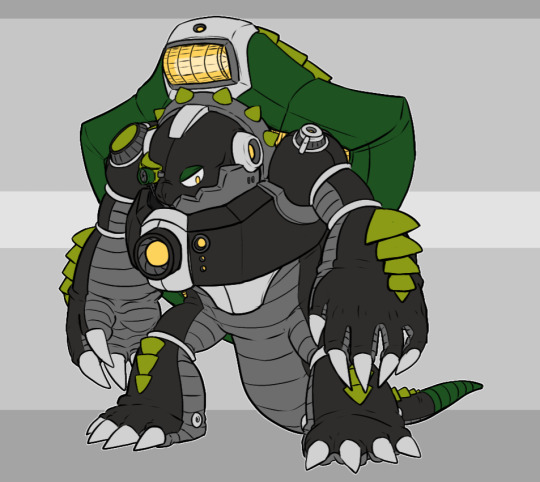
Snap Woman
DHN.009 - スナップウーマン “In a minute; I almost have this shot perfect.”
Good Point - Patient Bad Point - Hyperfocus Like - Natural beauty Dislike - Film
7’ (213.36 cm)
A non-combat robot built for civil engineering projects by Dr. Harp. She is based on the alligator snapping turtle (Macrochelys temminckii).
After Dr. Harp got over the heartbreak of losing Monitor Woman, she finally built another robot dedicated to filming, and photography. However, this time, instead of high speed 3D visualization for planning, Snap Woman specializes in timelapse; she will survey a specific area over a long period of time while another project is being done, and the footage is used to plan around patterns in weather, traffic, and other potential interference.
She is very slow and tough and extremely precise and patient with tedium. She does not necessarily have to sit still and do nothing while she records, due to the nature of her snapping single photos and assembling them into a sped up video. She is, however, extremely good at placing herself in the exact position each time she needs to take an image so as to create the illusion of a single, long shot.
She tries to do her work from vantage points where she can take photos of other interesting things between shots, preferring areas with nature, but if not, will settle for a good, high-up viewpoint where she can take additional timelapses of clouds, sunsets, and starscapes. She also adores taking photos of wildlife, especially macrophotography of invertebrates and other small animals.
On the downside, once she’s set on something, she will stick to it, usually completely ignoring anything outside of her immediate attention. She doesn’t get annoyed if interrupted; she just won’t be interrupted.
If she needs to defend herself, she can bite down hard enough to generate a concussive shockwave capable of deflecting physical ordinance (Gigaton Jaw).
Snap Woman has a basic pun name:
She is based on a snapping turtle
Her penchant for photography, indicated by the ‘snap’ of an old-fashioned shutter (even though she uses digital by necessity)
#oc snap woman#fancharacter#mega man#remes data cd#snap got a little face time in an rp and she's pretty fun#but i do worry her design leans too far into 'x'-series maverick territory#but on that token i kind of like that about her#her camera motif was also fun to make#also there's a gamera joke in there somewhere don't think too hard#and 'kame' being turtle and like kame-ra and ok i'll shut up#dr harp labs
27 notes
·
View notes
Photo
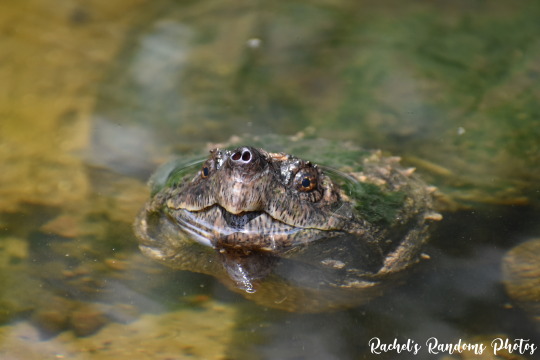
Alligator Snapping Turtle (Macrochelys temminckii)
Taken at FIT Botanical Gardens in Melbourne, FL
#alligator snapping turtle#snapping turtle#turtle#turtles#animals#animal photography#wildlife#wildlife photography#nature photography#photography#florida#florida photography#florida photographer#FIT botanical gardens#FIT botanical garden#FIT campus#florida institute of technology#botanical garden#botanical gardens#nikon photography#nikond3500
26 notes
·
View notes
Text

Alligator Snapping Turtle (Macrochelys temminckii), family Chelydridae, southeastern U.S.
This is the heaviest freshwater turtle in North America. The largest verified alligator snapper weighed in at 113 kg (249 lb).
photograph by Eric Soehren
298 notes
·
View notes
Note
HI I HAVE MORE QUESTIONS! why did you drink your own pee? what did that taste like? whats your favorite snake? whats your favorite lizard? favorite turtle? whats your favorite australian saying? whats your favorite sea animal besides killer whales? what color is your hair? how about your eyes? how tall are you? whats bushgender mean? do you play any instruments? whats the model of your car? what color is it? can you get custom license plates in australia? do YOU have a custom license plate?
Ah, Christ. Knew telling you cunts that would come back to bite me in the arse.
Why did you drink your own piss?
I was dying and thirsty. My pride and dignity is not more important than my life. So I drank my own piss. On the plus side, it worked. I had enough moisture in me to keep trekking for two days until I found actual water and then I was so half-lucid with dehydration that I almost drowned myself trying to drink it. On the plus side I got one helluva story and a new name!
(Don't do dehydration, kids.)
What did that taste like?
Tangy.
What's your favourite snake?
The one in me daks. Really though, probably Oxyuranus microlepidotus, or the dandarabilla. Most venomous snake on the planet, but not the most dangerous since these snakes are only really found in a VERY small region of the Outback in which VERY few people live, so you're very unlikely to encounter one. That said they do have the most toxic venom of all snake species on the planet (with the highest untreated lethality rate of all snake species at OVER EIGHTY PERCENT) and their venom goes into effect about 30 minutes after envenomation, and fatality usually occurs within 45 minutes of envenomation. So if you get bit you're fucked, basically.
Unlike many snakes, the dandarabilla ALSO has an envenomation rate of OVER EIGHTY PERCENT. That means that over 80% of the time they're going to inject venom. Venomous snakes can do something called a "dry bite," which is usually used as a warning strike and consists of them biting you without injecting venom. But the dandarabilla says "fuck that and fuck you, cunt" and INJECTS VENOM OVER EIGHTY PERCENT OF THE TIME.
Compare that to Crotalus atrox, the western diamondback rattlesnake, who only injects venom 60% of the time.
What's your favourite lizard?
The one in me daks. (For those of you that don't get it, chucking a piss is also called "draining the lizard" here.) My answer is Varanus giganteus, the perentie. I saw one eat a cat once. They scare me. I like them. (Also I fought one for rights to a pig carcass that I shot so they have no fear of humans.)
Favourite turtle?
The one in me- Okay this joke isn't working now. Macrochelys temminckii, the alligator snapping turtle. They're cool as hell, look fucking prehistoric, and can bite my fingers off. I think they're neat.
What's your favourite Australian saying?
"Well I'm not here to fuck spiders." City roos will tell you that we made that up as a joke for tourists but it's bullshit, we actually do say that in the Outback. We also use the alternative "Well I didn't come here to finger dingos." We're very crass, us Aussies.
If you ever want to find an Aussie in the wild just shout "AUSSIE AUSSIE AUSSIE" and any Aussies in the vicinity will immediately reply "OI OI OI!" It's our mating call.
I also love our age-old curse of "May your chooks turn into emus and kick your dunny down," which literally translates to "May your chickens (chooks) turn into emus and kick your toilet (dunny) down."
Also "dry as a dead dingo's donger," meaning you're very thirsty, "don't come the raw prawn with me," which means "don't try to pull one over on me," and every meaning of our slang usage of the word "piss."
What's your favourite sea animal besides orcas?
Octopodes are cool as. I love giant isopods. Siphonophores are pretty spiffy. I'd like to see marine iguanas.
What colour is your hair? How about your eyes? How tall are you?
I was born a strawberry blonde, but as I've gotten older it's darkened to a dirty blonde (I've got some neat natural highlights though). On good days (and with a lot of sun) it really lightens up to a golden blonde but that's usually only visible at the bottom of my mullet that gets sunlight. Most of my hair is obscured by my hat so it stays dark. I have light blue eyes that sort of alternate between blue and grey depending on the amount of light (grey in a room, light blue in direct sunlight). I'm a manlet and that's all I'm going to say about my height (I got my mum's shortness).
What's bushgender mean?
Honestly, I just... don't care about gender? It doesn't exist out in the bush. There's just my own biology and I'm not reminded of gender at all until I interact with people. I like it that way. I'm not necessarily nonbinary since I'm a bloke, it's just that gender is a complete afterthought to me so I just don't think about it. My gender is the bush. I am a bushie. The land doesn't care what I think of myself so why should I?
Do you play any instruments?
I can make dove calls with my hands. Also I play the harmonica but I'm terrible at it.
What's the model of your car? What colour is it?
'99 Ford. Not telling you the model because I don't like stalkers lmao but it's a ute with a camper in the tray. It's white. The paint reflects heat instead of absorbing so my engine is less likely to overheat in the Outback sun. Also white's an inoffensive colour so it stands out less in the bush than, say, black or blue or red or whatever.
Can you get custom number plates in Australia? Do you have a custom number plate?
Yes you can and yes I do! I run a business after all! I need to have something that identifies me!
10 notes
·
View notes